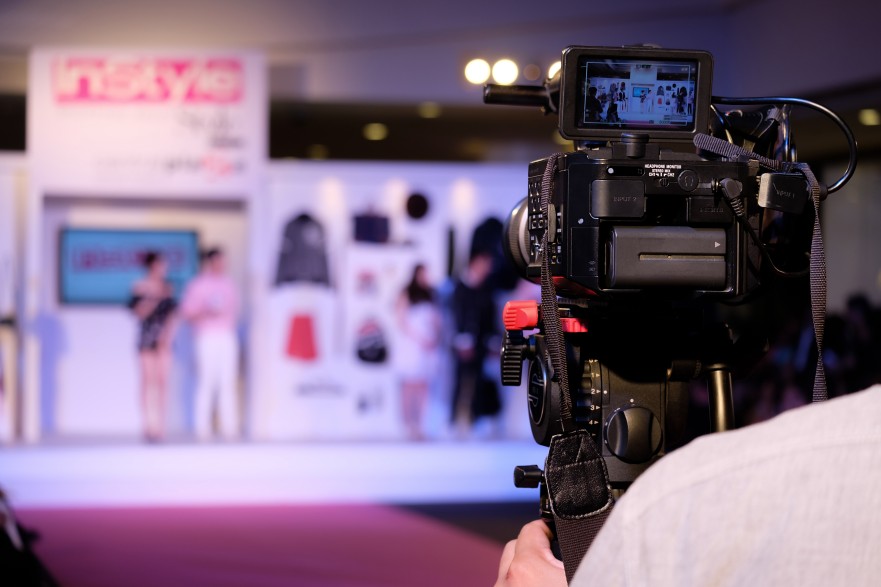Are you ready to take your event to new heights of success? In today’s competitive landscape, it’s not enough to simply host a great event; you need to create a captivating brand that sets you apart from the crowd. Branding brilliance is the key to attracting attendees, sponsors, and media attention, and ultimately, skyrocketing your event’s success.
But where do you start? Fear not, because we’ve got you covered.
In this article, we’ll share 9 expert tips and strategies to help you create a powerful event brand that will leave a lasting impression on your audience. So, let’s dive in and uncover the secrets to branding brilliance that will take your event to the next level.
Why is Event Branding Important?
In today’s crowded event landscape, creating a strong brand is essential to stand out from the competition and attract the right audience. Your event brand is the essence of what you’re offering and represents the experience attendees can expect.
It’s the first impression you make and sets the tone for the entire event. A well-defined and recognizable brand helps establish credibility, builds trust, and creates a sense of anticipation among your target audience.
The power of branding extends beyond just attracting attendees. A strong event brand can also attract sponsors and media attention. Sponsors are more likely to partner with events that have a clear and compelling brand identity, as it demonstrates professionalism and a well-thought-out marketing strategy.
Additionally, media outlets are more inclined to cover events with a strong brand presence, as it provides a compelling story and visual appeal.
To ensure the success of your event, it’s crucial to invest time and effort into developing a strong brand that resonates with your target audience. The following tips will guide you through the process of creating a captivating event brand that will make your event shine.
1. Understanding your Target Audience
Understanding your target audience is crucial when it comes to creating effective event branding strategies. Without a clear understanding of who your audience is, it becomes difficult to effectively communicate your brand message and engage with attendees.
By taking the time to research and analyze your target audience, you can tailor your event branding strategy to their specific needs, preferences, and interests, ultimately increasing the chances of a successful event.
Be Thorough in Gaining Market Information About your Niche Audience
One of the first steps in understanding your target audience is conducting market research. This involves gathering information about your potential attendees, such as their demographics, interests, and behaviors. By collecting data on factors such as age, gender, location, and profession, you can start building a profile of your target audience.
Additionally, conducting surveys or interviews can provide valuable insights into their preferences and expectations for events. This research will help you identify key characteristics and trends that can inform your event marketing strategy.
Customize via Analysis and Specific Interpretation
Once you have gathered data on your target audience, it is important to analyze and interpret the information. Look for patterns or commonalities among your audience members and use this information to segment them into different groups or personas. For example, if you are organizing a technology conference, you may find that your audience consists of both industry professionals and tech enthusiasts.
Now, you can tailor your event brand to resonate with them. Consider their preferences in terms of visual aesthetics, tone of voice, and messaging. By understanding their needs and desires, you can create a brand that speaks directly to them and compels them to attend your event.
2. Setting Clear Goals and Objectives
Setting clear goals and objectives is crucial when creating a successful event branding strategy. Without a clear direction, it can be challenging to effectively communicate the brand message and engage the target audience. By setting clear goals and objectives, event planners can align their efforts and resources toward achieving specific outcomes that support the overall branding strategy.
One of the primary reasons for setting clear goals and objectives is to provide a framework for measuring success. Without specific goals in place, it can be difficult to determine whether or not the event branding strategy is effective.
Clear goals allow event planners to track key performance indicators (KPIs) and evaluate the impact of their efforts. For example, if the goal is to increase brand awareness, KPIs such as social media engagement, website traffic, and attendee feedback can be used to measure the success of the event branding strategy.
Setting clear goals and objectives also helps to ensure that all stakeholders are aligned and working towards a common purpose. By clearly communicating the goals and objectives of the event branding strategies, event planners can engage sponsors, partners, and other stakeholders in a collaborative effort.
Furthermore, setting clear goals and objectives allows event planners to prioritize their efforts and allocate resources effectively. By identifying specific goals, event planners can determine which activities are most important and allocate resources accordingly.
3. Creating a Strong Brand Identity
Creating a strong brand identity is crucial to help build brand recognition. A brand identity encompasses the visual and conceptual elements that distinguish a brand from its competitors. It is what sets a brand apart and creates a unique and memorable experience for the target audience. When it comes to event branding, having a strong brand identity helps to establish credibility, build trust, and generate excitement among attendees.
Define your Brand and Its Values
One of the first steps in creating a strong and unique brand identity for an event is to clearly define the brand’s personality, values, and positioning. This involves understanding the target audience and identifying what makes the event unique and special. By clearly defining these aspects, event organizers can create a brand identity that resonates with the target audience and appeals to their interests and preferences.
Create a Multi-Purpose and Versatile Logo
Another key aspect of creating a strong brand identity is designing a visually appealing and recognizable logo. A logo serves as the face of the brand and should be unique, memorable, and reflective of the event’s theme or purpose. It should also be versatile enough to be used across various platforms and mediums.
By incorporating the logo into all event materials and collaterals, organizers can create a cohesive and consistent brand image that helps to build recognition and recall among attendees.
Set an Ideal Brand Theme
In addition to a logo, choosing a consistent color palette and typography is also important in creating a strong company brand. Colors evoke emotions and can help to convey the event’s message or theme. Typography, on the other hand, can add personality and style to the brand identity.
By carefully selecting colors and typography that align with the event’s objectives, organizers can create a visually appealing and cohesive brand identity that resonates with attendees.
Be Consistent in Every Aspect of Branding Elements
Lastly, creating a strong identity for thoughtful event branding requires consistent and strategic messaging. This involves crafting a compelling and consistent brand story that highlights the event’s unique selling points and value proposition.
The brand story should be communicated across all event touchpoints, from the event website to social media posts and even in-person interactions. By consistently communicating the brand story, organizers can create a sense of anticipation and excitement among attendees, leading to increased engagement and attendance.
Do you want to create a successful event branding strategy?
Contact Growth Hackers
4. Consistency Across All Event Materials
Consistent branding across all event materials is a crucial tip to create a successful event branding strategy. During the event planning, it is essential to ensure that all materials, from invitations to signage and promotional items, are consistent in design, messaging, and overall brand identity.
Consistency helps to establish a strong and memorable event brand, making it easier for attendees and prospective clients to recognize and associate with the event.
Consistency in the Brand Looks
One way to achieve consistency across all event materials is by using the same color palette, fonts, and graphic elements throughout. This creates a cohesive look and feel that reinforces the event’s brand identity.
For example, if the event brand is modern and sleek, using clean lines, minimalist graphics, and a monochromatic color scheme can help convey this aesthetic across all materials. On the other hand, if the event brand is more playful and vibrant, using bold colors, playful fonts, and whimsical illustrations can help capture this vibe.
Consistency in the Brand Message
Consistency in messaging is equally important when creating event materials. The key messages and value propositions of the event should be communicated consistently across all materials to avoid confusion and reinforce the event’s purpose. This can be achieved by using the same tagline or slogan on invitations, promotional materials, and social media posts.
Additionally, ensuring that the tone of voice used in all written materials aligns with the event’s brand personality helps create a cohesive experience for attendees.
Consistency In Use of the Logo and Related Graphics
Another aspect of consistency in event materials is the use of logos and visually appealing event branding elements. The event logo should be prominently displayed on all marketing materials to increase brand recognition. This includes invitations, banners, signage, handouts, and even digital assets such as email templates and social media graphics. Consistency in the placement, size, and color of the logo helps establish a strong visual identity for the event.
Consistency across all event materials extends beyond just visual branding and its related design elements. It also involves ensuring that all materials provide relevant and accurate information about the event. This includes details such as the event date, time, location, agenda, and registration instructions. Providing consistent and up-to-date information across all materials helps build credibility and trust with attendees and potential participants.
5. Utilizing Social Media for Event Promotion
Digital marketing strategies can play a crucial role in event promotion and brand building. Platforms like Facebook, Instagram, TikTok, Twitter, and LinkedIn offer powerful tools to reach and engage with your target audience. By leveraging social media effectively, you can create buzz around your event, attract attendees, and build a community of brand advocates.
Start by identifying the social media platforms that are most popular among your target audience. Focus your efforts on these platforms to ensure maximum impact. Develop a social media strategy that includes a content calendar, planned posts, and engagement tactics. Consistency is key, so ensure that your brand’s visual style, tone of voice, and messaging are reflected in your social media posts.
Use social media to create excitement and anticipation around your event. Share behind-the-scenes glimpses, teasers, and exclusive content to build anticipation. Encourage attendees to share their excitement about the event and use event-specific hashtags.
Engage with your audience by responding to comments and messages promptly. Social media is not only a promotional tool but also a platform for building relationships and fostering a sense of community.
6. Designing Eye-Catching Event Collateral
Event collateral plays a significant role in promoting your event and reinforcing your brand identity. From flyers and posters to banners and merchandise, well-designed event collateral can capture attention and leave a lasting impression on potential attendees.
When designing event collateral, ensure that the visual elements align with your brand identity and convey the desired message. Use the same color palette, typography, and visual style as your other brand materials to maintain consistency. Consider the placement of your logo and key event details to ensure they are easily visible and legible.
Don’t be afraid to get creative with your event collateral. Think outside the box and consider unique formats or interactive elements that will make your collateral stand out. For example, you could create a QR code that leads to a special offer or exclusive content. The goal is to create collateral that not only promotes your event but also creates a memorable and engaging experience for potential attendees.
7. Leveraging Partnerships and Collaborations
Collaborating with partners and influencers can significantly amplify your event’s brand reach and credibility. Identify potential partners and influencers who align with your event’s values and target audience. Event marketers can seek out opportunities for mutually beneficial collaborations that can help promote your event and enhance its brand image.
Partnerships can take various forms, from co-hosting events to cross-promoting each other’s brands. Consider collaborating on content creation, such as guest blog posts or social media takeovers. By leveraging each other’s audiences, you can reach a wider audience and build brand awareness.
Influencer marketing is another powerful strategy to consider. Identify influencers in your industry or niche who have a significant following and engage with your target audience. Collaborate with them to promote your event through sponsored posts, influencer reviews, or guest appearances. Influencers can help generate buzz, attract attendees, and enhance your event’s brand reputation.
8. Incorporating Experiential Marketing Tactics
Experiential marketing is all about engaging the audience and creating memorable experiences that leave an impactful event experience. By incorporating these tactics into event branding, businesses can effectively communicate their brand message and values in a way that resonates with attendees.
Interactive Installations
One way to incorporate experiential marketing into event branding is through interactive installations. These installations can be designed to showcase the brand’s products or service uniquely and engagingly. For example, a technology company could set up a virtual event. With a VR experience, the attendees can interact with their latest innovations.
Virtual events not only create excitement and buzz around the brand but also allow attendees to personally experience the benefits of the products or services being offered.
Sensory Branding
Another experiential marketing tactic that can be used for effective event branding is sensory branding. By appealing to the five senses – sight, sound, taste, smell, and touch – businesses can create a multi-dimensional experience that immerses attendees in their brand.
This could include using visually striking displays, incorporating music or sound effects that align with the brand image, offering samples or tastings of products, using scents or aromas that evoke positive emotions, and providing tactile experiences through touch or interactive elements. By stimulating multiple senses, businesses can create a more memorable and impactful brand experience.
Sense of Gaming
Additionally, incorporating gamification into event branding can be an effective way to engage attendees and create a sense of excitement and competition. This could involve setting up an outdoor event with interactive games or challenges that are aligned with the brand’s message or values.
For example, a fitness company could set up a virtual obstacle course where attendees compete against each other to win prizes. By incorporating gamification into event branding, businesses can create a fun and engaging experience that encourages event attendees to actively participate and interact with the brand.
Personalization
Personalization is another key aspect of experiential marketing. Tailor experiences to individual attendees, whether it’s through personalized emails, customized event itineraries, or targeted recommendations. By making attendees feel valued and understood, you can create a deeper connection with your brand and increase brand loyalty while also leaving a positive impression.
Dive in and create your winning event branding strategy today!
9. Monitoring and Measuring your Event’s Brand Success
To ensure the success of your event branding efforts, it’s essential to monitor and measure their impact. Set clear goals and key performance indicators (KPIs) that align with your event’s objectives. These could include metrics such as attendee satisfaction, social media engagement, media coverage, or sponsorship ROI.
Utilize analytics tools to track and measure the performance of your event branding initiatives. Monitor social media metrics, website traffic, and email open rates to gauge audience engagement. Conduct post-event surveys to gather feedback and assess attendee satisfaction. Track media mentions and coverage to evaluate the impact of your brand in the press.
Regularly review and analyze the data to identify areas of improvement and optimize your event branding strategies. Use the insights gained to make data-driven decisions and refine your brand messaging, visuals, and tactics for future events. Continuously monitoring and measuring your event’s brand success will help you stay on track and ensure your branding efforts are driving the desired results.
Final Thoughts on Creating A Successful Event Branding Strategy
Creating a powerful event brand is essential to skyrocket your event’s success. By following these 9 expert tips and strategies, you can build a brand that captivates your target audience, attracts sponsors and media attention, and creates a memorable event experience.
By investing time and effort into developing a strong event brand, you can elevate your event to new heights and create a lasting impression on your audience. So, start implementing these tips today and watch your event’s success soar.
And if you want your brand to be backed by professional guidance in gaining online popularity, then Growth Hackers is the partner you need. As a globally successful digital marketing agency, Growth Hackers understands the importance of online exposure for businesses in today’s world.
Our data-driven and result-driven approaches, coupled with innovative insights and analysis, can help ensure sustainable growth for your business. We recognize the significance of generating better leads and sales, which is why we put our clients’ ROI at the forefront of everything we do. With our expert team, we can help your business gain the online exposure it needs to succeed and reach its full potential. Trust us to take your business to new heights.
Contact us today and let us know how we can better help guide your business to its peak potential by working alongside and guiding your efforts every step of the way.








